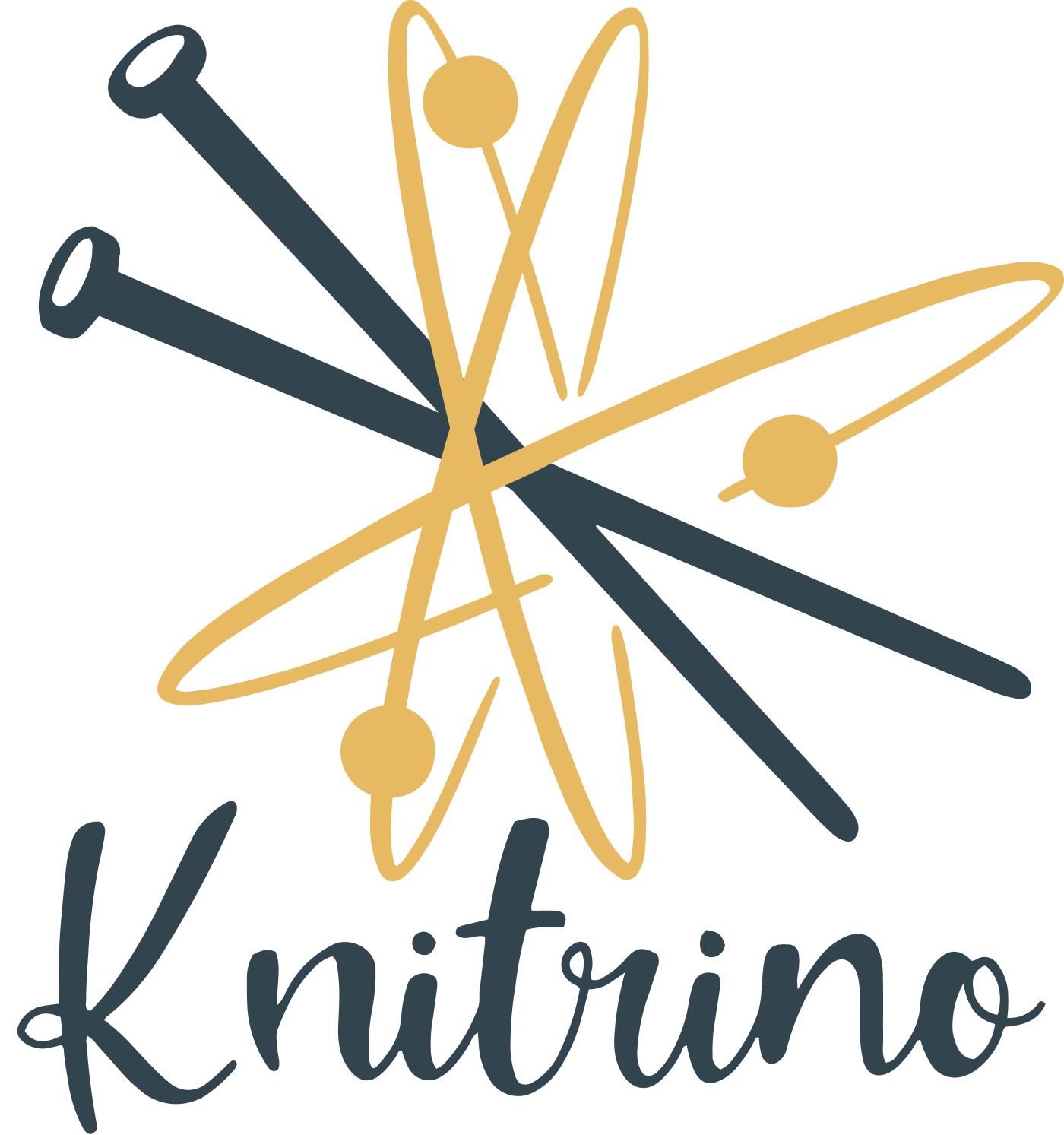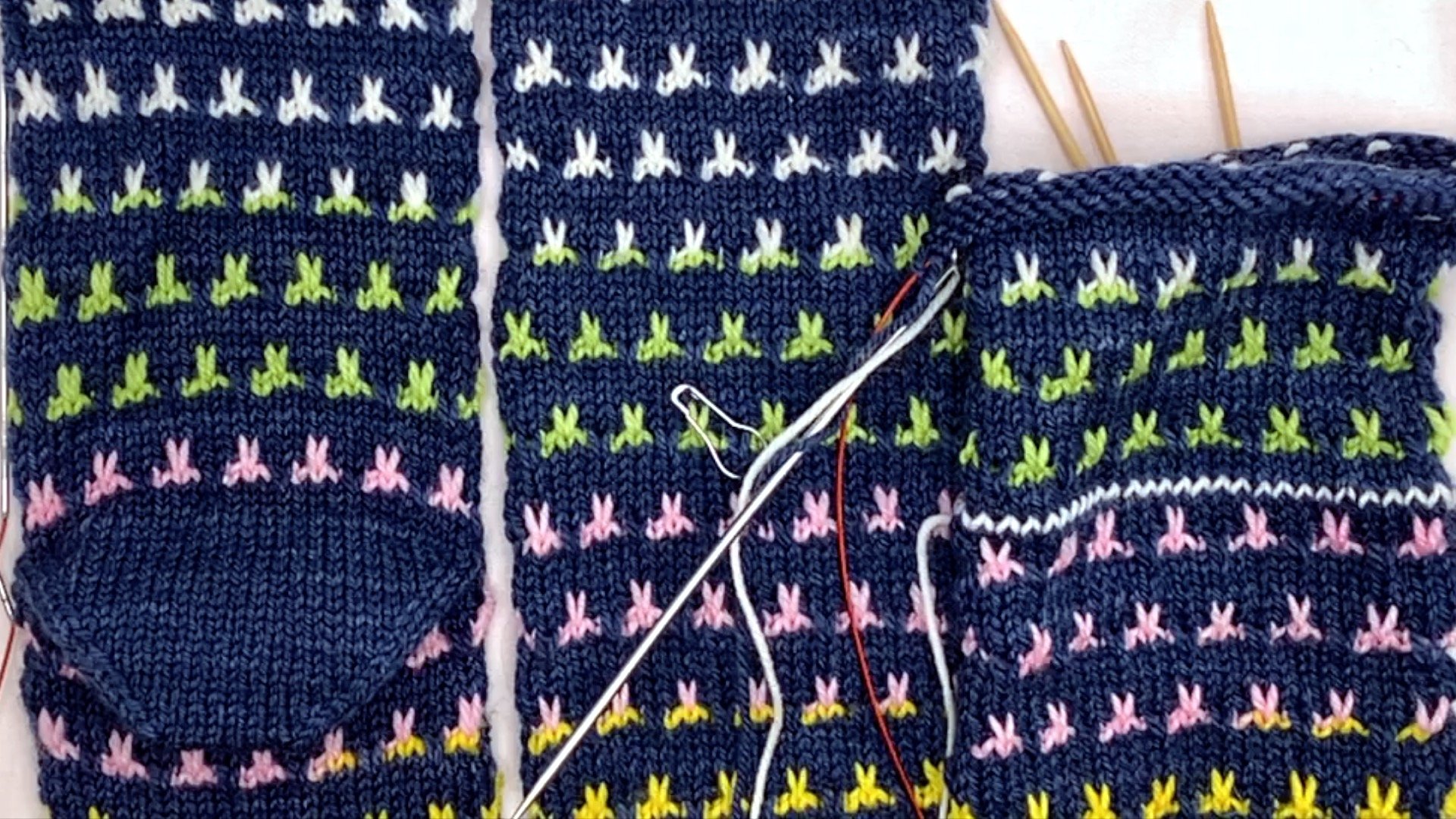Funfetti Socks
The Funfetti Socks are one of our favorites of Knitrino’s Workshop-Style Projects! Knitrino gives you everything you need from cast on to bind off, with all the videos and tutorials built right in–it’s like a workshop & pattern combined. To get this project, click the button below from your phone.
Overview
This guide contains lots of helpful information for knitting these socks–you can click any of these links to jump to the appropriate section. Those new to reading charts may wish to see How To Read Knitting Charts on our blog.
Measuring Your Foot and Choosing Your Size
How to select your size:
If you have access to the foot you’re knitting for, measure foot circumference. If the foot has wide feet, high arches, or large ankles/calves, we suggest adding 0.25” to your foot circumference.
Locate your shoe size on one of the charts below. US Men's sizes, add 1 to the values in the US Women's chart.
Find the blob closest to your size. If you're in between sizes or in an area of overlap, it's likely that either size could work for you. If you have wide feet, high arches, wide ankles or calves, pick the larger size.
If you don't know the details of the foot you're knitting for, you can generally just go from shoe size. If you have questions or need help, get in touch! We’ll be happy to make suggestions.
4 Ways to knit Small Circumferences In The Round
If you’re new to magic loop or want to try some other techniques, this video shows you 4 ways to knit in the round using small circumferences. Jump to 0:54 in the video to get to the good bits.
5 ways to Join A New Working Yarn
This video shows a few different methods you can try to join a new working yarn.
Construction
These toe-up socks begin with a modified version of the Magic Cast On that prevents twisted stitches on the sole stitches. The socks are worked in the round one at a time using Magic Loop, though you can easily substitute your favorite sock method. Waste yarn stitches are inserted for a planned "afterthought" heel, and the leg is worked to the cuff. Note that these socks may be knit two at a time, but keep in mind you'll have to manage 4 balls of yarn.
Those new to reading charts may wish to see How To Read Knitting Charts on our blog.
Checking Gauge
Because swatching for small-circumference colorwork can be tricky, we recommend casting on the first sock, knitting a few inches, blocking, and measuring gauge or your sock half-circumference. If your sock is tight or measures less than the listed circumference, try going up a needle size or sizing up.
When working slipped stitch rounds, spread stitches out on the needles as you go to keep floats from being pulled taut.
Knitrino’s Extra Magic Cast On
This cast on is one we use often. It’s based on Judy’s Magic Cast On but the stitches are wrapped differently so you won’t have twisted stitches on the second half of the stitches.
The stitches should be distributed on the long circular with half of the stitches on the front needle, and half on the back needle.
Customization
We recommend your sock be 0.25” - 0.75”/0.5 - 2 cm smaller than your foot in circumference, and 0.25” - 1”/0.5 - 2.5 cm shorter than your foot in length. Because there’s a limit to how much a knit fabric can stretch in all directions, when considering fit, think about the total volume of your foot. If your foot is only 0.25” wider than the sock in circumference, it’s ok to have more negative ease in length (in other words, it’s ok for your foot to be on the long side - 1” longer than the sock), and vice versa.
There are three easy ways to adjust the foot length.
Add more rounds in plain stockinette after the toe and before beginning the foot motif.
Move the waste yarn stitches 8 rounds earlier or later on the foot, i.e. if the waste yarn is inserted at round 66, you can instead insert them at round 74 to make your foot length about 0.7” longer.
Add rounds to the heel before beginning the heel decreases to increase the foot length. Note that this “deepens” the heel and will also make the heel taller on the back of your foot.
A true afterthought heel: In theory, this method allows you to place the heel anywhere! However, in practice, we suggest always placing the heel in the plain stockinette arounds as we’ve done. Some knitters may find it confusing to put stitches on the needles in rows where there are slipped stitches.
The image below shows the two methods to modifying the heel placement on the size small sock. The sock on the left shows the heel inserted as written in the pattern. The sock in the middle shows a sock knit without any waste yarn stitches and with marker showing where we’ll cut for a true afterthought heel. The sock on the right shows the waste yarn stitches inserted 8 rows AFTER they should’ve been placed. Note that both methods yield essentially the same result, as we’re constrained by the slipped-stitch rounds.
Planned Afterthought Heel (Pattern As Written)
These videos show the set up and start of the full “planned” afterthought heel. If you want to try a true afterthought heel, see the video on customization above.
Grafting Stitch
Once you’ve knit he heel, you’ll close it up with the Grafting Stitch.
We find Grafting Stitch to be really meditative. There’s a quick setup to get started: first draw your tapestry needle through the first stitch on the front needle purlwise, then draw your needle through the first stitch on the back needle knitwise. Then find your rhythm and repeat these 2 steps to the end:
Step 1: On the front needle, slip 1 knitwise, draw through 1 purlwise
Step 2: On the back needle, slip 1 purlwise, draw through one knitwise.
Stretchier Bind Offs
Some knitters struggle to keep their bind offs loose enough so that the sock cuff stays stretchy. This video shows the standard bind off, plus 2 stretchy alternatives.
Jeny’s Surprisingly Stretchy Bind off is a popular alternative for sock cuffs. While it IS wonderfully stretchy, the look leaves a lot to be desired. So we also share our modified version, which in our opinion looks a lot tidier and still gives you some extra stretch.
Not sure what we’re talking about? It’s the Funfetti Socks, available exclusively in Knitrino. To get the pattern, open Knitrino or click the image below from your phone. 📱Knitrino works on iOS and Android devices only - there’s no PDF associated with this pattern.




